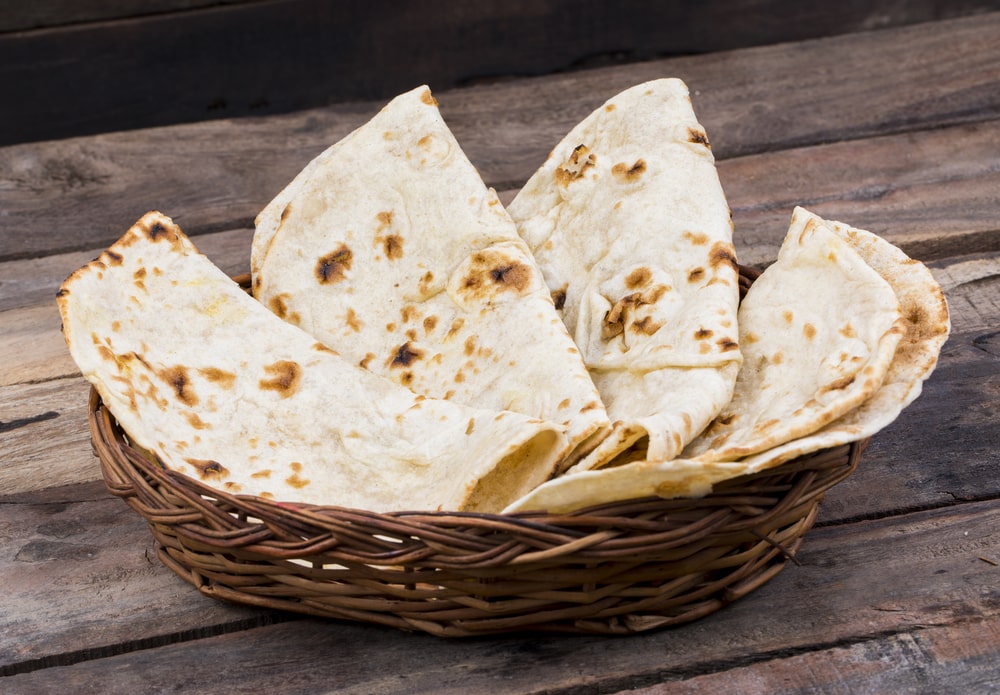Canada’s culinary landscape has undergone a remarkable transformation in recent years, driven in part by the nation’s increasing cultural diversity. One standout trend that has gained significant momentum is the growing popularity of Indian cuisine. Amidst this culinary awakening, frozen roti has emerged as a convenient and delicious staple in Canadian households. In this article, we will delve into the traditional roots of roti, explore the reasons behind its surge in popularity in Canada, discuss its nutritional aspects, and provide practical insights on cooking with frozen roti.
Traditional Roots of Roti
Roti, a type of Indian unleavened flatbread, has deep-rooted cultural and culinary significance. In India, roti has been a staple for centuries, lovingly prepared in kitchens using traditional methods. These time-honored techniques involve kneading flour, water, and sometimes a bit of oil or ghee to create a soft and pliable dough. The dough is then rolled into thin rounds and cooked on a hot griddle or open flame.
This traditional process highlights the artistry and dedication that go into making the perfect roti. It’s a skill that has been passed down through generations and is a symbol of the importance of family and community in Indian culture.
The Canadian Palate Meets Roti
The rise of Indian cuisine in Canada can be attributed to immigration patterns and the nation’s welcoming stance towards diverse cultures. As Canada’s population becomes increasingly multicultural, the demand for authentic flavors and dining experiences has grown significantly. Indian restaurants and grocery stores have sprung up in cities across the country, introducing Canadians to the rich and diverse world of Indian cuisine.
With this newfound exposure to Indian flavors, Canadians developed a taste for dishes traditionally accompanied by roti. However, the time-consuming process of making roti from scratch posed a challenge for many who wanted to enjoy these delicious meals at home.
The Convenience Factor
In the hustle and bustle of modern Canadian life, convenience often plays a crucial role in food choices. This is where frozen roti steps in as a practical solution. Frozen roti offers the authentic taste and texture of homemade roti but without the labor-intensive process of preparation.
For busy Canadian families, having a pack of frozen roti in the freezer means they can enjoy the flavors of Indian cuisine without spending hours in the kitchen. It’s a convenient option for busy weeknight dinners or when unexpected guests arrive, as it can be cooked in a matter of minutes.
Comparatively, frozen roti offers the convenience of other popular frozen food items while maintaining the authenticity and cultural significance of this traditional Indian bread.
The Health Perspective
One concern often associated with convenience foods is their nutritional value. When it comes to frozen roti, the health perspective is nuanced. While it’s true that frozen roti can be a source of carbohydrates and calories, its nutritional content can vary depending on the brand and ingredients used.
Homemade roti allows for greater control over the ingredients, including the type of flour, oil, and seasonings used. In contrast, frozen roti may contain preservatives and additives to prolong shelf life. However, many brands now offer frozen roti options made with natural ingredients and no preservatives, catering to health-conscious consumers.
Furthermore, the convenience of frozen roti can encourage people to incorporate more vegetables and lean proteins into their meals, as it pairs well with a variety of dishes.
The Variety of Frozen Roti
One of the appealing aspects of frozen roti is its variety. Canadian consumers can find a diverse range of frozen roti options in their local grocery stores. These options cater to different tastes and preferences, allowing individuals to explore the flavors of India.
Popular frozen roti brands offer variations such as whole wheat roti, garlic-flavored roti, and even stuffed roti with fillings like potato, spinach, or paneer. This variety adds a dynamic element to meals and encourages culinary experimentation.
Moreover, regional variations in roti styles are reflected in the frozen roti market, providing a taste of India’s culinary diversity. Whether you prefer the soft and fluffy roti of North India or the thinner, crispier versions of the South, there’s a frozen roti option for everyone.
Cooking with Frozen Roti
Using frozen roti in your culinary endeavors is easy and time-saving. Here’s a simple guide on how to prepare frozen roti:
Thaw: Remove the desired number of frozen roti from the package and allow them to thaw for a few minutes at room temperature. This makes them easier to handle.
Heat: Place the thawed roti on a hot griddle or non-stick skillet. Cook for about 30 seconds on each side or until they puff up and develop golden brown spots.
Serve: Serve the hot roti with your favorite Indian dishes, such as curry, dal, or kebabs. They also make great wraps for sandwiches or as a side for salads.
Conclusion
In conclusion, frozen roti has made a significant impact on the Canadian culinary scene by offering the flavors of India with the convenience of modern living. Its rise is a testament to the evolving food culture in Canada, where tradition meets innovation in the most delicious way possible. As we savor the convenience and cultural diversity that frozen roti brings to our plates, it’s clear that this trend is here to stay, enriching Canadian cuisine for years to come.

